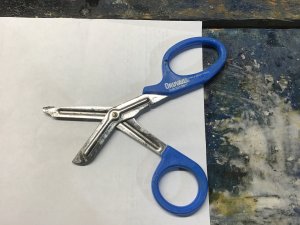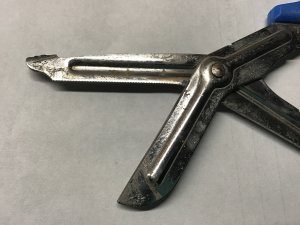Dsoc
Member
I have sanded my 1965 Sunfish hull and ground the bad spots on both chines. Everything looks good I took a look inside and it is dry. I would like to reinforce both of these areas after the initial repairs are completed. This is at the widest spot on both sides. My plan is to gelcoat the top and the Hull. Any suggestions are appreciated.
Last edited:





 I buy cheap $1 scissors at Dollar Tree and re-sharpen them on my bench grinder. (Approximate the angle). You'll have created two very amateur coarse edges, but these "reclaimed" scissors will cut through fiberglass cloth even better than the new ones!
I buy cheap $1 scissors at Dollar Tree and re-sharpen them on my bench grinder. (Approximate the angle). You'll have created two very amateur coarse edges, but these "reclaimed" scissors will cut through fiberglass cloth even better than the new ones! 

